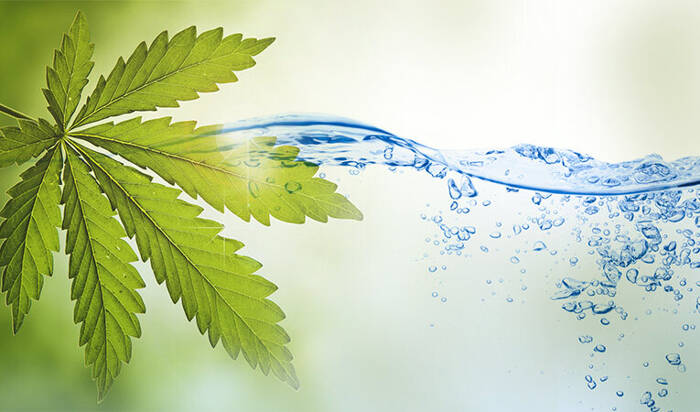The Cannabis Industry: Water Conservationist or Water Hog? Depends Whom You Ask.
“An economically unsustainable model,” declared Derek Smith, then as now director of the Resource Innovation Institute (RII) in Portland, Oregon. Anything soaking up that much H20 was “an economically unsustainable model,” he said.
Turns out that that 22-liter figure was dead wrong. It had come from an aging 1996 cannabis growers’ manual. But that data point had its effect: Today, many government and corporate officials still believe that cannabis needs more water than other crops.
They’re wrong too, according to a new report from New Frontier Data, in partnership with RII and the University of California-Berkeley Cannabis Research Center. The report, Cannabis H2O: Water Use and Sustainability in Cultivation, says that in the United States, legal and illegal cannabis cultivation yearly uses 2.8 billion gallons (including 0.6 billion for legal operations) per year.
That annual amount, says the report, is roughly equivalent to Americans’ daily use of 39.5 million gallons of water, livestock farming (using 2 billion gallons per day), mining (4 billion gallons per day) and six days’ water use in all U.S. hotels (figuring full occupancy and 100 gallons use per room per day).
“Based on the analysis we’ve done, cannabis uses dramatically less water than other sectors of the economy,” Frontier Data’s chief knowledge officer John Kagia said at an industry briefing on March 10, held in tandem with the report’s release. Ten speakers addressed policy and sustainability practices.
Said Smith at the briefing, “Understanding water use is the first step to learning how we can create a more sustainable cannabis agriculture industry.” .
Smith and other speakers said that water-efficiency measures are deeply important to growers on the legal side of cultivation though less so to illicit operations, which accordingly consume much more water.
Another problem is determining just how much water is used when experts try to compare a drought-plagued legal state like California – with multiple growing regions of its own — to a less climate-troubled Michigan.
In California, the report said that the belief that cannabis is drawing down the state’s water supply “is often based on an incorrect correlation between large revenues earned by the cannabis industry and production levels seen in other high-revenue crops.”
Examples: A wholesale pound of cotton, rice or table grapes sells for less than a dollar while “a wholesale pound of smokable cannabis can fetch $1,500 to $3,000.” Add to this cannabis’s explosive growth: Cannabis in 2020 was a $20 billion a year industry, expected to rise to $40 billion within the next few years, Kagia said at the briefing.
Also, according to the report:
- By 2025, total water use of the legal cannabis market is expected to increase by 86 percent.
- Combined legal and illicit cannabis crops used nearly 2.8 billion gallons in 2020, with usage forecast to reach 3.6 billion gallons by 2025, fueled by demand-driven growth.
- The illicit market will remain the primary driver of water use over the next five years, accounting for 83 percent of water use in 2020, and declining to 69 percent in 2025.
- Water-use practices are highly diverse in the new regulated cannabis industry, underscoring the need for well-tailored regulatory policies that are responsive to this diversity.
“This diversity” encompasses the size and type of cultivation operation (indoors, outdoors, greenhouse); these facilities’ respective numbers of harvests per year; and the size of individual plants and their numbers per acre, Such apples-and-oranges factors, coming operations across multiple states, make data collection difficult.
The RII researchers, who provide data on cannabis’s “social and environmental dimensions,” therefore developed a “power score” using self-reported data on square footage of flowering canopy, annual production and gallons of water applied and stored; these power scores are the heart of the Frontier Data report, which focused in on Michigan and California operations in particular.
This wide array of factors means that the legal cannabis industry has its work cut out for promoting itself as an agent of sustainability — but it’s trying. “The U.S. is poised to have a really robust conversation around climate change and sustainability,” Kagia said at the briefing. “I think this is a singular opportunity for the cannabis industry to engage in this conversation.” And it’s important now, he said, estimating that 11 states are in the “pipeline” to legalization.
It’s also a vital move for growers, Kagia pointed out. “We’re talking about this as a matter of survival,” he said. “Companies that figure out how to do this are going to be best positioned to compete in an increasingly competitive landscape.” That landscape, he added, may be “an environment where water resources may become mor acute.”




